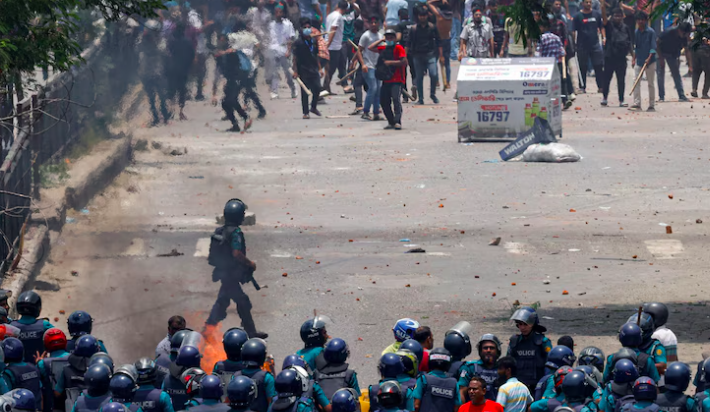In the recent past, Bangladesh has seen a lot of violence emanating from mass protests spearheaded by students calling for the scrapping of the much-detested job reservation policy. This social inequality has led to more violence and has claimed over one hundred lives, forcing the government to come up with strict measures to address the violence.
Originally demanding the abolition of the quota system, in compliance with which at least 50 percent of civil service employees are to be members of the respective groups, including children of the veterans of the 1971 liberation war, the protest quickly turned violent. Many opponents find this as a way by which the ruling party is favored and meritocracy dampened in public job openings.
Battles have continued to escalate across the country, especially in the capital city of Dhaka, and this has exerted pressure on Prime Minister Sheikh Hasina’s government. The situation worsened to the extent that Bangladesh imposed a curfew and mobilized the army to contain the riots. Thus, the opinions of people were restricted regarding the manifestation of their protest actions and communication through limiting their right to freedom of speech and imposing a curfew, prohibitions on meetings, a telecommunication blackout that included internet connections and interruptions of mobile services to halt the sharing of information, and the use of force to stop the escalation of violence.
The eruptions of the protest greatly escalated with the different factions attacking cops; this led to a loss of many lives and at least 300 police officers being hospitalized. Some of the reported incidents include protesters’ invasion of a jail in Narsingdi, releasing prisoners, and burning the jail.
International responses have been diverse, with India for instance defining the protests as domestic affairs of Bangladesh while at the same time being concerned about the lives of its citizens within this nation which comprises of thousands of Indians studying within the nation. The United Nations has deplored the violence involved into it saying that any attempts to attack the protesters should be investigated and the perpetrators be brought to book.
In the same regard, Prime Minister Hasina cut down her overseas tour to Spain and Brazil diplomatic trips signifying the elite’s focus on tackling domestic instabilities. Hasina who has been in power since 2009 and whose party has been accused of electoral fraud to win a contentious fourth term in the early months of this year, is accused of authoritarianism and abuse of state power to hound dissent.
The protests have also affected the cultural and economic facets, social activities, and even basic ICS’s in turn within Bangladesh. The decision made by the government to shut down schools and universities to restore law and order supports the notion and reveals the pervasiveness of the people’s unrest and its impacts on education and society.
Opponents of Hasina’s government sought to stress that the forceful actions against the dissenting citizens and the strict restrictions testify to the subject matter, which concerns democratic rights and liberties in Bangladesh as well. They claimed that the administration uses totalitarian methods and extralegal measures against opponents and political activists to cling to power.
Thus, looking to the future, the outcomes of the protests that Bangladesh is going through during this period, and the actions of the government and organizations all over the world will play a key role for further development. The latter can be considered the protesters’ demands for reform and change in the country resulting from systematic failures, and the government’s capacity to meet these demands and still maintain stability will define Bangladesh’s political environment in the following months.











Add Comment